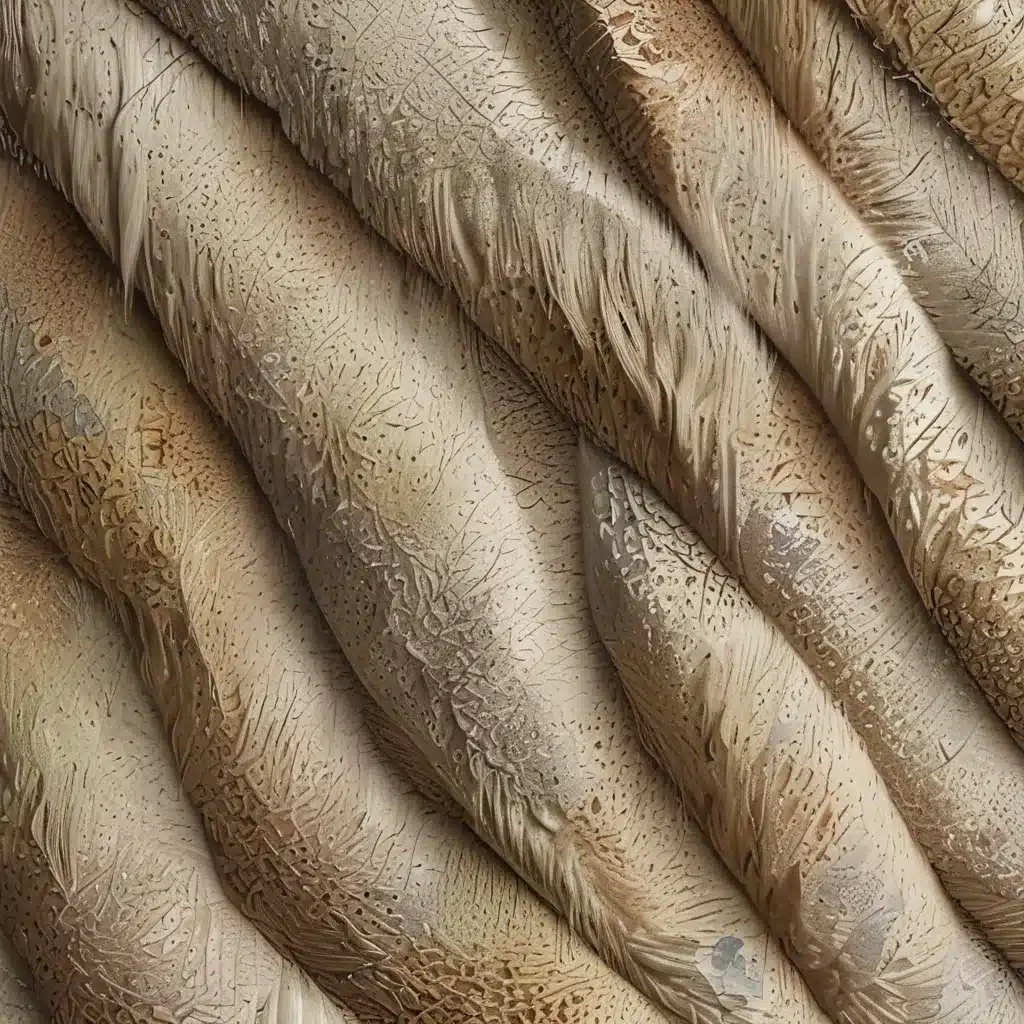Currently Empty: £0.00
As I step into the warm, inviting space of the Sofa Spectacular showroom, I’m immediately struck by the interplay of textures that greet me. Plush velvets nestle alongside sleek leathers, while chunky knits and smooth lacquered surfaces create a visual symphony that captivates my senses.
This harmonious blend of high-low textures is the hallmark of design excellence, and it’s a technique that can elevate any living space, from the grandest of drawing rooms to the coziest of nooks. As a self-proclaimed texture enthusiast, I’ve long been fascinated by the ways in which contrasting surfaces can create depth, intrigue, and a sense of personal style.
Embracing Texture in Interior Design
Think about the clothes in your wardrobe for a moment. Chances are, you don’t simply reach for one fabric or material day in and day out. Instead, you instinctively mix and match, pairing a crisp cotton shirt with a soft cashmere sweater or a sleek leather jacket with a flowing chiffon scarf. This principle of layering and texture is just as crucial in interior design, where it can transform a seemingly ordinary space into a visually captivating sanctuary.
Just as a well-curated outfit can showcase your personal style, the textures you choose for your home can speak volumes about your design aesthetic. A room dominated by smooth, polished surfaces might convey a sense of modern minimalism, while one with an abundance of cozy, nubby fabrics could evoke a warm, inviting feel.
Striking the Right Balance
The key to mastering the high-low texture approach is to strike the perfect balance. Too much of a good thing can be overwhelming, leading to a cluttered or disjointed look. But when executed with care and intentionality, the interplay of contrasting surfaces can create a sense of depth and visual interest that draws the eye and captivates the senses.
One of my favorite examples of this technique in action is the Mash & Mint Mason Blueprint Rug. The intricate geometric pattern is rendered in a soft, plush pile, creating a tactile experience that invites you to run your fingers across its surface. Yet, the design is grounded by a sleek, polished border, adding a touch of modern sophistication that balances the cozy, textural elements.
Layering Textures for Visual Depth
When it comes to incorporating high-low textures into your living space, the possibilities are endless. Start by considering the dominant materials and finishes in your room, then look for opportunities to introduce contrasting elements.
For example, if your space is anchored by a sleek, leather sofa, you might layer in soft, nubby throws and pillows to create a cozy, inviting seating area. Or, if your walls are finished with a smooth, matte paint, consider hanging a piece of abstract art with a thick, impasto-style texture to add depth and visual interest.
The same principle applies to surfaces like flooring and countertops. Pairing a high-gloss tile with a matte, natural stone can create a striking contrast that elevates the overall design. Or, you might juxtapose a sleek, polished concrete floor with a plush, hand-knotted area rug to anchor the space and add a cozy, inviting element.
Embracing the Unexpected
One of the joys of incorporating high-low textures into your design is the element of surprise and delight it can bring. By thoughtfully combining unexpected materials and finishes, you can create a sense of discovery and intrigue that keeps your guests engaged and captivated.
Consider, for example, using a rough-hewn wooden coffee table as a counterpoint to the smooth, velvet upholstery of your sofa. Or, layer a chunky, cable-knit throw over the streamlined silhouette of a mid-century modern chair. These unexpected pairings not only add visual interest but also inject a sense of personality and individuality into your space.
Balancing Textures with Cohesion
Of course, it’s important to remember that while high-low textures can create visual excitement, they must also work in harmony with the overall design of the space. Achieving this balance requires a keen eye for proportion, scale, and color.
One strategy is to establish a unifying color palette or material theme that ties the space together, even as you introduce contrasting textures. For instance, you might choose a neutral, earthy tone as your foundation, then layer in pops of color and varying surfaces to add depth and interest.
Alternatively, you might select a single material, like wood, and explore its versatility by incorporating it in different forms – from a sleek, lacquered entertainment unit to a rustic, live-edge dining table. This approach helps to create a cohesive, harmonious feel while still allowing you to experiment with texture.
The Transformative Power of Texture
As I continue to explore the Sofa Spectacular showroom, I’m consistently struck by the way the interplay of high-low textures can transform a space. A plush, velvet sofa nestled against a backdrop of smooth, painted walls; a chunky, knitted throw draped over a sleek, chrome frame – each pairing creates a dynamic visual interplay that captivates the senses and sparks the imagination.
Ultimately, the art of blending high-low textures is not just about creating a visually stunning environment; it’s about cultivating a space that reflects your unique personality and design sensibilities. By embracing the unexpected, celebrating contrasts, and striking the perfect balance, you can craft a living space that is not only beautiful, but truly extraordinary.
So, why not take the leap and start infusing your home with the transformative power of high-low textures? The possibilities are limitless, and the rewards – a space that captivates, comforts, and inspires – are truly priceless.



